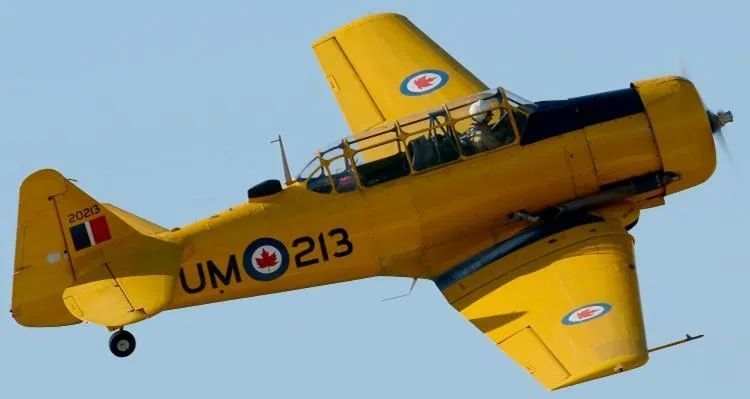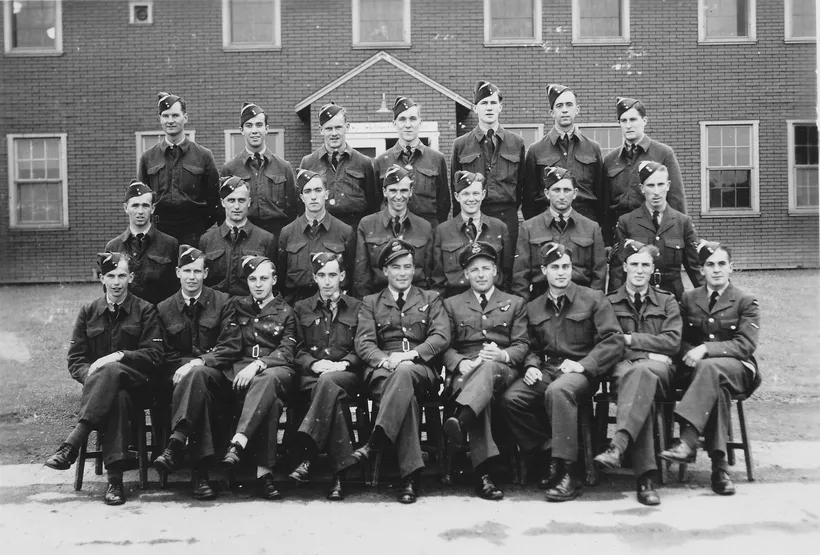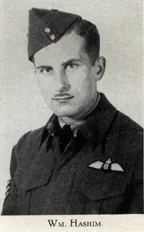North, Muriel Almyra (Leading Aircraftwoman)
Killed in Flying Accident 1944-September-08


Birth Date: 1923-January-11
Born: Montreal, Quebec
Parents: Daughter of Earl R. North and Jennie North, of Montreal.
Spouse:
Home: Montreal, Quebec
Enlistment: Montreal, Quebec
Enlistment Date: 1943-January-14
Service
RCAFWD
Unit
13 SFTS- Service Flying Training School
Base
North Battleford, Saskatchewan, Canada
Rank
Leading Aircraftwoman
Position
photographer
Service Numbers
W/310206
Prev: W310206
Home
Crew or Other Personnel
Harvard 2579
Harvard serial: 2579

Canadian Warplane Heritage Museum
The North American Harvard appeared in 1937, in response to a US Air Corps proposal for an advanced trainer. The first of 50 Harvard Mk. Is ordered by the Canadian Government were delivered to RCAF Sea Island, BC in July 1939. By early 1940, the Mk. II was being assembled in California with an all metal fuselage replacing the original tube and fabric structure. 1200 Mk. IIs were supplied from US sources, until Canadian built Harvards started being produced in 1941.
In August 1938, Noorduyn Aviation of Montreal farsightedly signed an agreement with North American, to build the Harvard under licence. When the British Commonwealth Air Training Plan (BCATP) came into being in December 1939, Noorduyn received its first orders and went on to produce nearly 2800 Harvard Mk. IIBs for the RCAF and the RAF, between 1940 and 1945. In Canada, Harvard Mk. IIBs were used as advanced trainers with the BCATP at fifteen Service Flying Training Schools across the nation. They helped pilots make to the transition from low powered primary trainers, like Fleet Finch or the de Havilland Tiger Moth, to high performance front line fighters such as the Spitfire.
At the end of WW II, although the RCAF retained the Harvard as a trainer, a large number of them were sold off to civilian operators. The RCAF soon regretted this, for by 1949 the Cold War with the Soviet Union was in full swing and the RCAF urgently needed trainers again. 100 T-6J Texans were leased temporarily from the USAF and a further 270 Harvards, the Mk. IV version, were ordered from Canadian Car & Foundry, Thunder Bay. The RCAF used the Harvard Mk. IV for a further fifteen years, before finally retiring it in 1966.
A total of 20,110 Harvards were built between 1938 and 1954, 3,370 of them in Canada. Countless numbers of privately owned Harvards are still flying today.
Canadian Warplane Heritage Museum's Harvard Mk. IV was built by Canadian Car & Foundry, Thunder Bay, Ontario in late 1951. The aircraft saw service at four RCAF flying schools across the nation until it was sold to a civilian owner in 1965. It was the third aircraft to join the Museum after Dennis Bradley, Alan Ness and John Weir donated it in 1973. Canadian Warplane Heritage Museum
Unit Desciption
13 SFTS (13 Service Flying Training School)
Graduates of the EFTS "learn-to-fly" program went on a Service Flying Training School (SFTS) for 16 weeks. For the first 8 weeks the trainee was part of an intermediate training squadron; for the next 6 weeks an advanced training squadron and for the final 2 weeks training was conducted at a Bombing & Gunnery School. The Service schools were military establishments run by the RCAF or the RAF.
There were two different types of Service Flying Training Schools. Trainees in the fighter pilot stream went to an SFTS like No. 14 Aylmer, where they trained in the North American Harvard or North American Yale. Trainees in the bomber, coastal or transport pilot stream went to an SFTS like No. 5 Brantford where they learned multi-engine technique in an Airspeed Oxford, Avro Anson or Cessna Crane.

For More Information on RCAF Station St. Hubert see here
RCAF.info - RCAF Station St Hubert QC
![]() 13 SFTC Story of Multiple Harvard Accident 1942-06-16
13 SFTC Story of Multiple Harvard Accident 1942-06-16
13 SFTS moved to North Battleford Saskatchewan in February 1944
For More Information on RCAF Station North Battleford see here
RCAF.info - RCAF Station North Battleford SK
RCAF.info - Relief Landing Field Hamlin SK
RCAF.info - Relief Landing Field Brada SK
![]() Brada Relief Field - Air Force Ghosts
Brada Relief Field - Air Force Ghosts
![]() Saskatchewan Virtual War Memorial - Base History
Saskatchewan Virtual War Memorial - Base History
Supplemental Story
Both WW1 and WW2 exapnded the roles of women. Women also continued in traditional roles, those roles were more highly valued.
- These videos describe the exapnding role for women in both wars, as well as expand on the tradional roles in war time.
 Women at War World War 1 (York University 6:44)
Women at War World War 1 (York University 6:44)
- In 1941-1942 the Women's Division was official added to the RCAF. It was mostly a measure to free up man for combat. However many women had very distinguished service records.
 RCAF Women's Division from Juno Beach Centre
RCAF Women's Division from Juno Beach Centre RCAF Women's Division in Britain (1:43)
RCAF Women's Division in Britain (1:43)
- Elsie MacGill, "Queen of the Hurricanes".
 Elsie MacGill, first women Aerospace Engineer, was also a comic book hero.
Elsie MacGill, first women Aerospace Engineer, was also a comic book hero. Queen of the Hurricanes (1:00)
Queen of the Hurricanes (1:00) Elsie MacGill, Queen of the Hurricanes (5:29)
Elsie MacGill, Queen of the Hurricanes (5:29) Roberta Bondar on Elsie MacGill
Roberta Bondar on Elsie MacGill Elsie MacGill Comic Book story from WW2
Elsie MacGill Comic Book story from WW2
- Special Military Roles of Women in Canada
 Canadian Women Codebreakers (11:43)
Canadian Women Codebreakers (11:43) Canadian Women in Air Transport Auxiliary (3:33)
Canadian Women in Air Transport Auxiliary (3:33)
- Women Pilots in Canada
Today woman pilots in Canada are too numerous to mention, but that has not always been the case. These are some of women who pioneered the change in women's roles in flying.
 Canadian Woman Pilots Through the Years
Canadian Woman Pilots Through the Years
